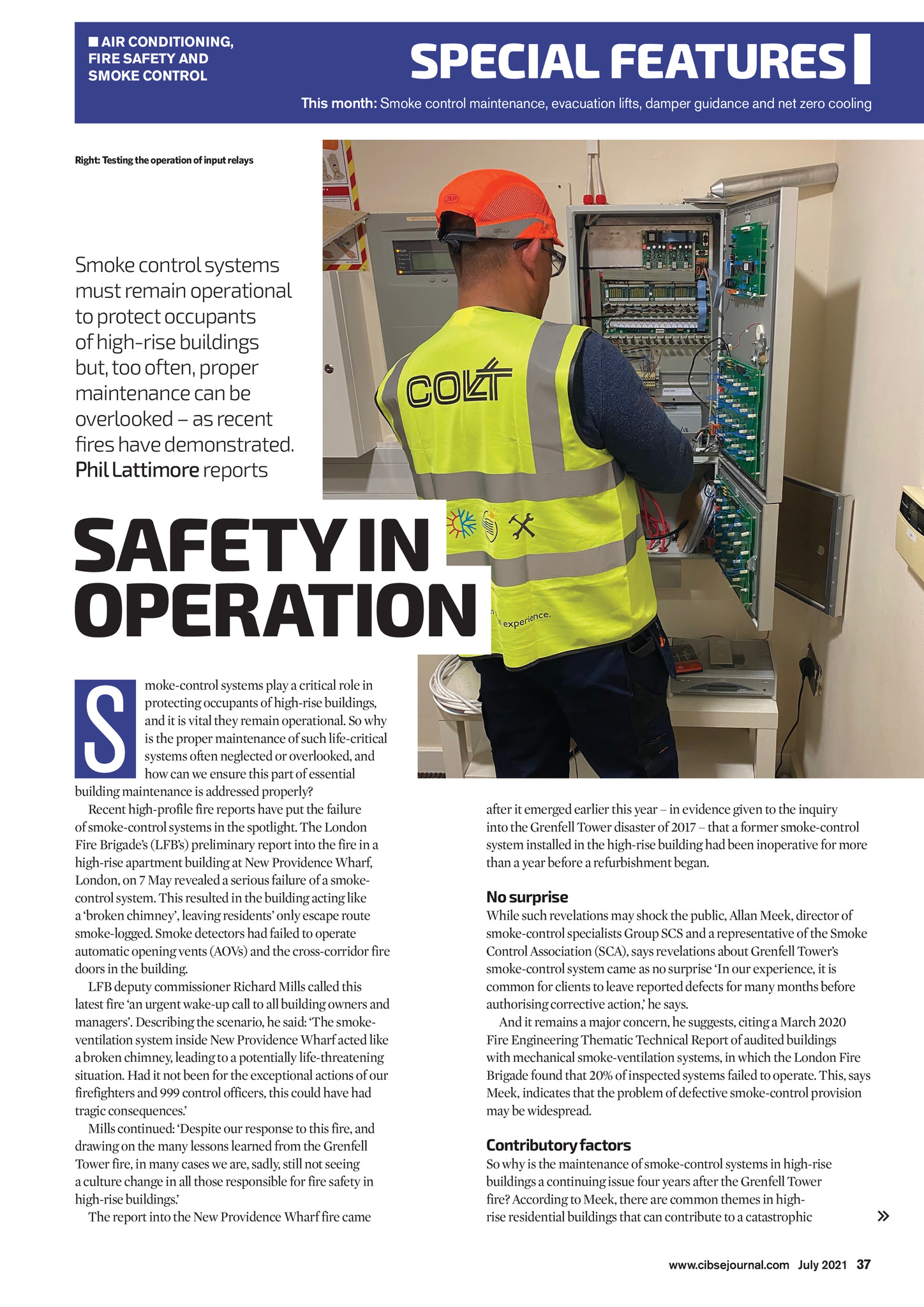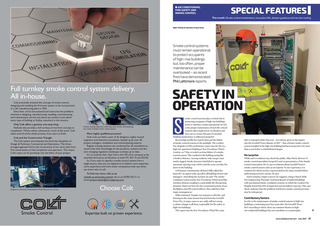


SPECIAL FEATURES AIR CONDITIONING, FIRE SAFETY AND SMOKE CONTROL This month: Smoke control maintenance, evacuation lifts, damper guidance and net zero cooling Right: Testing the operation of input relays Smoke control systems must remain operational to protect occupants of high-rise buildings but, too often, proper maintenance can be overlooked as recent fires have demonstrated. Phil Lattimore reports SAFETY IN OPERATION S moke-control systems play a critical role in protecting occupants of high-rise buildings, and it is vital they remain operational. So why is the proper maintenance of such life-critical systems often neglected or overlooked, and how can we ensure this part of essential building maintenance is addressed properly? Recent high-profile fire reports have put the failure of smoke-control systems in the spotlight. The London Fire Brigades (LFBs) preliminary report into the fire in a high-rise apartment building at New Providence Wharf, London, on 7 May revealed a serious failure of a smokecontrol system. This resulted in the building acting like a broken chimney, leaving residents only escape route smoke-logged. Smoke detectors had failed to operate automatic opening vents (AOVs) and the cross-corridor fire doors in the building. LFB deputy commissioner Richard Mills called this latest fire an urgent wake-up call to all building owners and managers. Describing the scenario, he said: The smokeventilation system inside New Providence Wharf acted like a broken chimney, leading to a potentially life-threatening situation. Had it not been for the exceptional actions of our firefighters and 999 control officers, this could have had tragic consequences. Mills continued: Despite our response to this fire, and drawing on the many lessons learned from the Grenfell Tower fire, in many cases we are, sadly, still not seeing a culture change in all those responsible for fire safety in high-rise buildings. The report into the New Providence Wharf fire came after it emerged earlier this year in evidence given to the inquiry into the Grenfell Tower disaster of 2017 that a former smoke-control system installed in the high-rise building had been inoperative for more than a year before a refurbishment began. No surprise While such revelations may shock the public, Allan Meek, director of smoke-control specialists Group SCS and a representative of the Smoke Control Association (SCA), says revelations about Grenfell Towers smoke-control system came as no surprise In our experience, it is common for clients to leave reported defects for many months before authorising corrective action, he says. And it remains a major concern, he suggests, citing a March 2020 Fire Engineering Thematic Technical Report of audited buildings with mechanical smoke-ventilation systems, in which the London Fire Brigade found that 20% of inspected systems failed to operate. This, says Meek, indicates that the problem of defective smoke-control provision may be widespread. Contributory factors So why is the maintenance of smoke-control systems in high-rise buildings a continuing issue four years after the Grenfell Tower fire? According to Meek, there are common themes in highrise residential buildings that can contribute to a catastrophic www.cibsejournal.com July 2021 37 CIBSE July 21 pp37-39 Smoke control.indd 37 25/06/2021 18:30